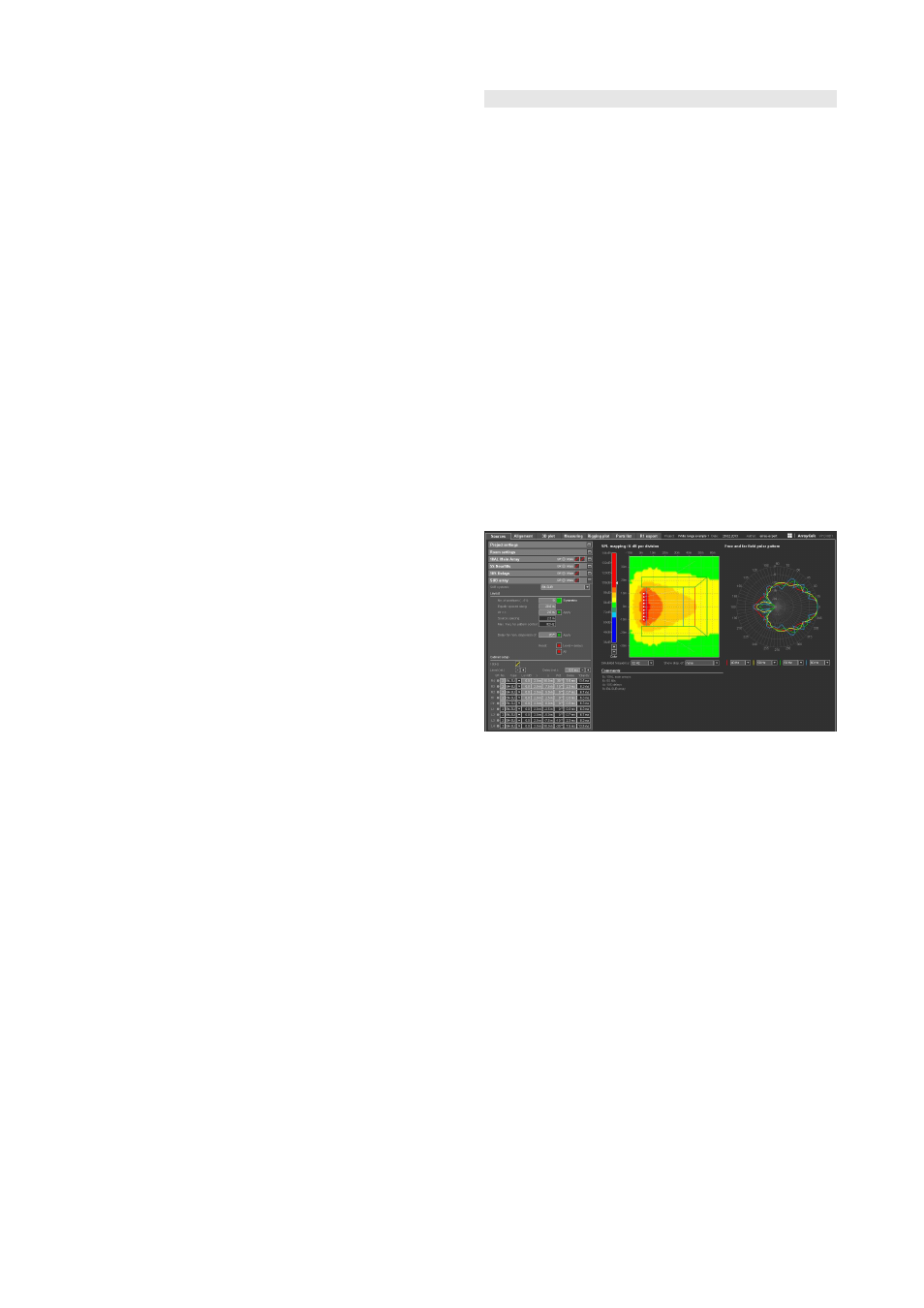2 simulation limits, 10 sub arrays, 2 l/r ground stack – d&b TI 385 d&b Line array design User Manual
Page 32

This procedure allows you to modify setup parameters as
soon as a certain result or behavior is perceptible without
having to wait for the calculation to be completed. The
progress of the calculation in relation to the target resolution
is displayed in per cent.
Note: However, please note that constant
recalculation will lead to a persistently high processor
load and will quickly discharge your notebook batteries.
For this reason, when working on notebook computers
without AC supply, switch off the Autocalculate function.
You can trigger a recalculation manually by clicking the
Recalculate button. If a relevant parameter in the project
has been modified since the last calculation, this is
indicated by "Recalculate (required)".
10.9.2 Simulation limits
All the calculations performed in ArrayCalc assume perfect
free field conditions. For this reason, it must be kept in mind
that all the resulting predictions might not be describing the
final result when working indoors. In a room with a distinct
modal structure in the low frequency range ArrayCalc's
predictions especially in the low frequency range might
deviate significantly from reality.
10.10 SUB arrays
10.10.1 General considerations on stacked
subwoofer placement
The intention of a SUB array is to distribute the available
low frequency energy as evenly as possible.
ArrayCalc calculates the dispersion and coverage of
horizontal SUB arrays for different LF bands. It provides the
necessary individual delay settings of the subwoofers to
achieve the desired array directivity.
ArrayCalc applies a complex summation (vector
summation) of all sources of the SUB array for a fixed
number of sample points distributed evenly across the
displayed area. For all subwoofer types high resolution
dispersion data is used containing both amplitude and
phase information.
For SUB arrays as well as for a standard L/R setup,
ArrayCalc allows to calculate the overall time alignment
between ground stacked subwoofers and a selectable
array in the project to provide a correct system impulse
response. This procedure is performed on the Alignment
page, which is described in detail in section 10.11.1 Time
alignment of SUB arrays on page 39.
Sources page, SUB array selected
10.10.2 L/R ground stack
A conventional L/R subwoofer configuration provides the
best coupling between the individual subwoofer cabinets,
thus providing highest efficiency and best impulse response.
However, this only applies to the setup center axis. A look
at the SPL mapping at 50 Hz shows all the well-known side
effects: The power alley in the center, the cancellation
zones to the left and right of the center, repeated power
zones, etc.
TI 385 (6.0 EN) d&b Line array design, ArrayCalc V8.x
Page 32 of 54
